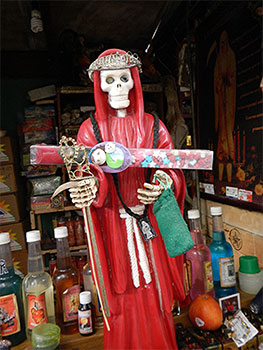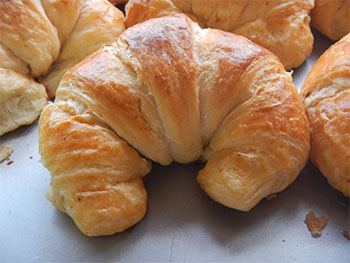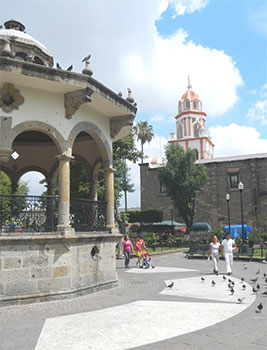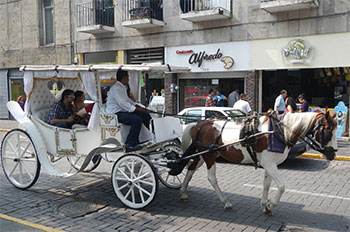 |  |
By Greg Niemann

The trio of guitarists enthusiastically belted out the melodious “Gua-da-la-jara, “Gua-da-la-jaaaa-raaaa,,” drowning out city noises and reminding the appreciative street side diners where they were – in Mexico’s second largest city and the birthplace of the country’s iconic music, mariachi.
With broad sombreros, tight pants and spangled jackets, mariachi groups are everywhere in the Guadalajara area, from fancy restaurants to small cafes with a few outside tables of local “Tapatios” (What a person from Guadalajara is called).
It had been 25 years since I’d been to the charming capital city of Jalisco, and while all the character and friendliness remained intact, much had changed – including a huge new Expo Convention Center, and the massive Millennium Arch 2000. At 52 meters (150 plus feet) the bright yellow landmark arch spans a busy roadway.
I was comforted with the familiar in the historic Centro area where broad shaded sidewalks face parks and plazas, cathedrals, classical buildings and monuments. Anchoring one plaza is the venerable Degollando Theater (1856) which continues to provide performances including the current Ballet Folklorico. The city center (Centro) (est. 1531) is also home to several museums, government buildings (Palacio de Gobierno, Palacio Municipal), and the Plaza de

We rode the public busses from our hotel to Centro and beyond, even to the villages of Tlaquepaque and Tonala. Most busses cost 6 pesos ($.50) even for the long one hour, 20 minute ride to Tonala. Some rides were direct; others we had to change busses but the drivers were very helpful, reminding us where to get off. From Centro one day we walked to Calle Independencia where we caught the Macrobus, which commands a special lane in the middle of the highway. We headed north, past the City Zoo, to the end of the line. The line ends there because the city ends there, at a huge chasm (the Barranca de Oblatos) with a muddy river (Rio Grande de Santiago) way, way down below, over 1,700 feet straight down. We hiked around lookouts and miradors, marveling at how abrupt the landscape changes from a busy city to a beautiful and pristine canyon.
Tlaquepaque
One day we took the bus to the artist enclave of San Pedro Tlaquepaque where we saw our first gringos in three days. It was just a handful of non-Latinos at that, even though there were Mexican tourists.

Tlaquepaque has matured nicely, with fine art galleries (Gallery Sergio Bustamante, for example) and antique shops joining the more than 200 stores and factories that sell pewter, talavera, copper, leather, stonework, and wrought iron. A six block pedestrian street has been beautified with public art and bronze statues.
El Parian is a peaceful square dating from 1878 featuring outdoor dining. Street vendors are everywhere and a couple of guys played on the xylophone all afternoon.
The main plaza, Jardin Hidalgo, features a kiosk made of quarry stone topped with a talavera tile cupola, and faces the 200-plus year old Sanctuary of Our Lady of Solitude. Nearby is Plazoleta Juan Pablo II (Pope John Paul II Square) where a bronze statue of Latin America’s papal favorite is revered.
We found one of our favorite meals in the bustling Mercado Municipal Benito Juarez where we squeezed in a bench seat among the locals at one of the numerous food stalls and enjoyed a delicious Pozole (a hominy based soup sans the tripe) lunch.

Tlaquepaque is a suburb of Guadalajara on the southeast and you can also take a taxi from your hotel or join a tour where it is the most popular destination. Once in town you can join a Walking Tour where the highlights are pointed out.
Tonala
Farther to the east at the edge of the Guadalajara metropolitan area is the artist and artisan village of Tonala, where almost every citizen is somehow involved in pottery or handicraft production marketing.
Shops were just opening as we walked from the bus stop to the city center, but it was quickly apparent that this town was an organized delight. Wedding dresses dominated the shops on one block, and pewter the next. Riots of colorful flowers were featured on one block, and children’s dolls the next.
The picturesque plaza fronted the church and the market. As the expected rain began to fall we sought shelter in the public market and enjoyed lunch on outdoor tables covered by tarps overhead. Even so, more rustic mariachi groups strolled by between raindrops to assuage the local diners that they were still part of the Guadalajara experience.
We didn’t realize until later that Thursdays and Sundays are market days when artisans convene upon the town with their pottery, stoneware and other handicrafts. We missed that by a day.
Guadalajara has two seasons, the wet one (June July and August), and the dry one the rest of the year. We were there in July, which might explain the dearth of tourists. Most of the rain came in the evening or at night when the skies would open up with booming thunder and a dazzling display of lightning. We just waited out the storm that day in Tonala.
There are a lot of retired Americans and Canadians living in the Guadalajara area, and most of those are in the communities of Lake Chapala and Ajijic about 40 kilometers south of town. The picturesque shallow lake there provides a restful backdrop to the artist and expatriate colonies. On our last visit we went down there to wander cobbled streets and note the walled enclaves of the gringos but were not in the mood to be among a bunch of English-speaking expats this time.
Things to do:
Outside of exploring Centro Guadalajara and the villages of Tonala and Tlaquepaque on your own like we did, there are several options available to make the most of this area.

Guadalajara City Tour – Perhaps the best value and comprehensive day trip is the Guadalajara City Tour where for 390 pesos (about $27.00) a walking tour of the historic Centro area is provided before an air-conditioned bus whisks you to both Tonala and Tlaquepaque (about 7 hours total). From hotel.
Tapatio Tour – An open deck bright red bus offers tourists a birds-eye view of the downtown area and Tonala and Tlaquepaque.
La Caladrias -- If you really like the open feeling hire a Caladria (horse and buggy) for an hour or so and clip-clop around the parks and plazas.
Tequila Express – The town of Tequila about 80 kilometers away is the heart of Mexico’s tequila country. The Tequila Express tour ($100 US) is a full day outing into the Valle de Tequila (One of Mexico’s Pueblo Magicos) which along with seeing how the fiery liquid is made, includes a fiesta with mariachis and folkloric show.
In the Guadalajara area there are numerous hotels, including the larger chains. The town of Tlaquepaque also offers several smaller inns and B&B’s. Choose from the Casa de las Flores, the Casa de Rotoño, the Casa Campos, or the Villa de Ensueño, all a short stroll from the heart of town.
I enjoyed Guadalajara more this time around. The absence of in-your-face tourism was most appealing and we were able to meet many friendly Tapatios. While it is a big city (1.5 million) it is a pleasant contrast to burgeoning Mexico City (18 million). Plus they’ve got the world’s best croissants.
About Greg
Greg Niemann is the author of Baja Fever, Baja Legends, Palm Springs Legends, Big Brown: The Untold Story of UPS, and Las Vegas Legends. Visit: Greg's website.